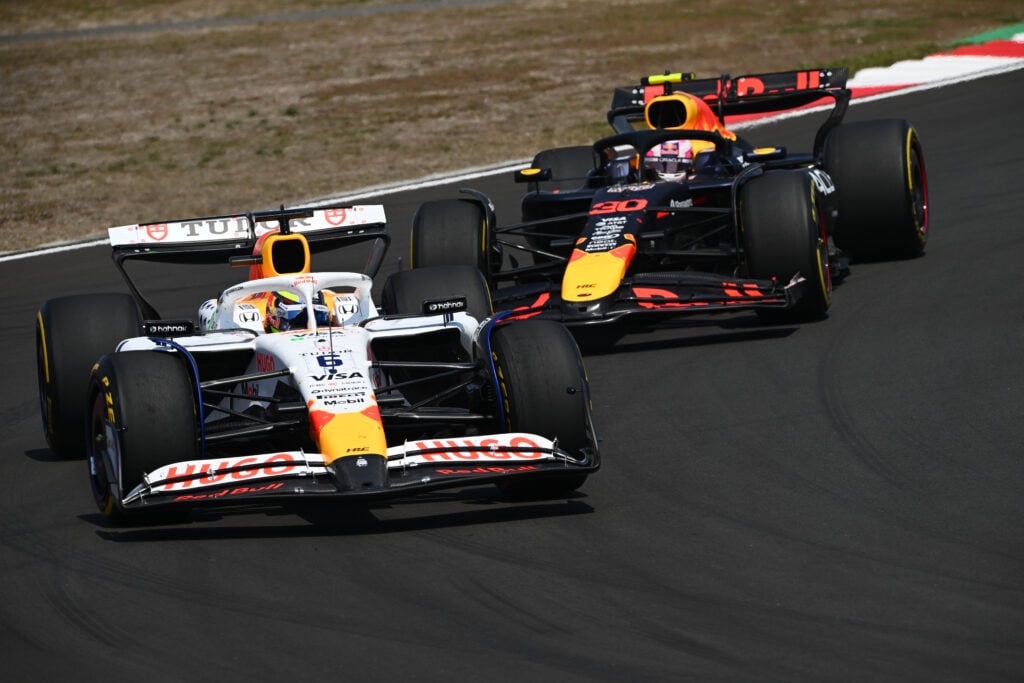Lawson Faster Than Verstappen in VCARB? A Shock Result and What it Means
The recent VCARB (Virtual Car Racing Benchmark) tests have thrown the Formula 1 world into a frenzy. Unexpectedly, Liam Lawson, Red Bull's reserve driver, posted lap times faster than reigning world champion Max Verstappen. This surprising result has ignited speculation about Lawson's potential and the future of Red Bull's driver lineup. But how reliable are these virtual tests, and what does this really mean for the upcoming F1 season?
Lawson's Stunning VCARB Performance: Fact or Fluke?
The news broke earlier this week: Liam Lawson, in a simulated Red Bull RB19, outpaced Max Verstappen in the rigorous VCARB testing environment. While the specifics of the tests remain somewhat shrouded in secrecy, the raw data points to a clear advantage for Lawson in certain sectors of the track. This isn't to say Verstappen underperformed; rather, Lawson seemingly demonstrated a superior understanding of the car's setup and optimal driving lines within the simulated environment.
Key Takeaways from the VCARB Results:
- Lawson's consistency: Reports suggest Lawson maintained a high level of consistency throughout the testing period, minimizing errors and maximizing track time.
- Simulated setup advantages: The virtual nature of the testing allows for precise setup adjustments, potentially giving a driver like Lawson, known for his meticulous approach, an edge.
- Verstappen's potential distractions: While purely speculative, Verstappen's real-world commitments and immense pressure might have impacted his focus during virtual testing.
However, it's crucial to temper the excitement. VCARB results, while informative, aren't a direct predictor of real-world performance. Factors like tire degradation, weather conditions, and direct competition are absent in this virtual setting.
The Significance of Virtual Testing in Modern F1
VCARB and similar simulation technologies are increasingly vital in modern Formula 1. Teams use these tools to:
- Develop and refine car setups: Virtual testing allows engineers to experiment with various car configurations before committing to changes on the actual track.
- Train drivers: Simulators provide a safe and controlled environment for drivers to practice race strategies, hone their skills, and familiarize themselves with new tracks.
- Analyze driver performance: Detailed data gathered from virtual testing provides valuable insights into driving style, braking points, and overall performance.
What Does this Mean for the Future?
While Lawson's victory in VCARB is impressive, it's vital to avoid drawing premature conclusions. It certainly showcases Lawson's talent and adaptability, reaffirming his position as a strong reserve driver for Red Bull. However, translating virtual speed to real-world success remains a significant challenge.
It's more likely that this result underscores the importance of simulator training and highlights Lawson's potential to be a strong contender in the future. It might even strengthen his case for a potential promotion should an opportunity arise within the Red Bull Racing team.
Beyond the Hype: A Realistic Perspective
The narrative surrounding Lawson's VCARB performance should be viewed with a healthy dose of skepticism. While the results are intriguing and demonstrate Lawson’s skill, they shouldn't overshadow the proven prowess of Max Verstappen on the actual track. This news serves as a testament to the evolving role of simulation in Formula 1, providing valuable insights into driver capabilities while reminding us that the ultimate test of skill remains on the asphalt.
Want to stay updated on the latest F1 news and tech developments? Subscribe to our newsletter! (This is a subtle CTA)
